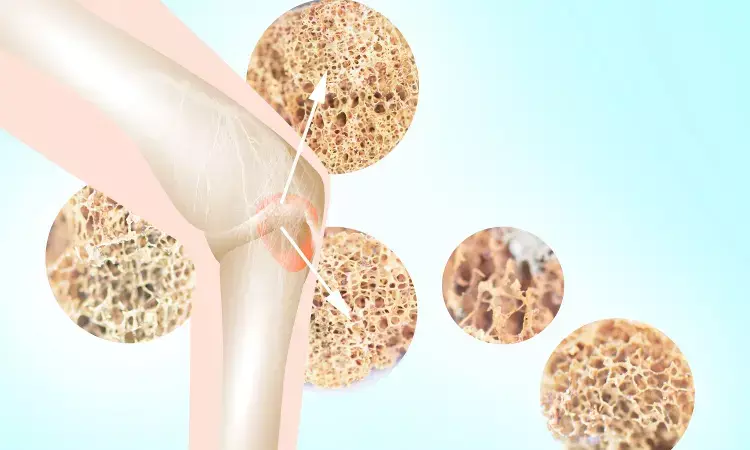- Home
- Medical news & Guidelines
- Anesthesiology
- Cardiology and CTVS
- Critical Care
- Dentistry
- Dermatology
- Diabetes and Endocrinology
- ENT
- Gastroenterology
- Medicine
- Nephrology
- Neurology
- Obstretics-Gynaecology
- Oncology
- Ophthalmology
- Orthopaedics
- Pediatrics-Neonatology
- Psychiatry
- Pulmonology
- Radiology
- Surgery
- Urology
- Laboratory Medicine
- Diet
- Nursing
- Paramedical
- Physiotherapy
- Health news
- Fact Check
- Bone Health Fact Check
- Brain Health Fact Check
- Cancer Related Fact Check
- Child Care Fact Check
- Dental and oral health fact check
- Diabetes and metabolic health fact check
- Diet and Nutrition Fact Check
- Eye and ENT Care Fact Check
- Fitness fact check
- Gut health fact check
- Heart health fact check
- Kidney health fact check
- Medical education fact check
- Men's health fact check
- Respiratory fact check
- Skin and hair care fact check
- Vaccine and Immunization fact check
- Women's health fact check
- AYUSH
- State News
- Andaman and Nicobar Islands
- Andhra Pradesh
- Arunachal Pradesh
- Assam
- Bihar
- Chandigarh
- Chattisgarh
- Dadra and Nagar Haveli
- Daman and Diu
- Delhi
- Goa
- Gujarat
- Haryana
- Himachal Pradesh
- Jammu & Kashmir
- Jharkhand
- Karnataka
- Kerala
- Ladakh
- Lakshadweep
- Madhya Pradesh
- Maharashtra
- Manipur
- Meghalaya
- Mizoram
- Nagaland
- Odisha
- Puducherry
- Punjab
- Rajasthan
- Sikkim
- Tamil Nadu
- Telangana
- Tripura
- Uttar Pradesh
- Uttrakhand
- West Bengal
- Medical Education
- Industry
Hyperuricemia in obese patients associated with lower lumbar bone mineral density

A new study by Yi Zhang and team showed that in obese people, lumbar bone mineral density (BMD) was adversely correlated with hyperuricemia (HU). The findings of this study were published in Frontiers in Endocrinology.
A serious clinical and public health problem, obesity. Sadly, obesity affects more than 100 million people globally. More significantly, obesity has grown to be a significant public health issue in China. Therefore, the purpose of this study is to determine the cross-sectional relationship between obesity-related hyperuricemia and bone mineral density.
This cross-sectional study included 275 obese participants, including 126 men and 149 women. Body mass index (BMI) 28 kg/m2 was used to diagnose obesity, whereas blood uric acid levels of 416 mol/L for males and 360 mol/L for women were used to diagnose HU. Dual-energy X-ray absorptiometry (DXA) was used to calculate the BMD of the right hip and lumbar spine. To investigate the association between BMD and HU in obesity, multivariable logistic regressions were used, adjusting for age, gender, fasting blood glucose, HOMA-IR, fasting insulin, cholesterol, low-density lipoprotein, triglycerides, high-density lipoprotein, blood urea nitrogen, creatinine, high-sensitivity C-reactive protein (hs-CRP), cigarette smoking, and alcohol consumption.
The key findings of this study were:
1. In this obese group, the prevalence of HU was 66.9% overall.
2. This population's mean age and BMI were 35.2 5.2 kg/m2 and 27.9 9.9 years, respectively.
3. The highest vs. lowest BMD quartile's multivariable-adjusted OR showed a negative correlation between BMD and HU across the board for the L1, L2, and L3 lumbar vertebrae.
4. The BMD was also shown to be adversely correlated with the total HU, L1, L2, L3, and L4 lumbar vertebrae in the subgroup analysis for the male population.
5. However, women did not exhibit these findings.
6. Furthermore, there was no connection between HU and hip BMD in obese people.
Reference:
Zhang, Y., Tan, M., Liu, B., Zeng, M., Zhou, Y., Zhang, M., Wang, Y., Wu, J., & Wang, M. (2023). Relationship between bone mineral density and hyperuricemia in obesity: A cross-sectional study. In Frontiers in Endocrinology (Vol. 14). Frontiers Media SA. https://doi.org/10.3389/fendo.2023.1108475
Neuroscience Masters graduate
Jacinthlyn Sylvia, a Neuroscience Master's graduate from Chennai has worked extensively in deciphering the neurobiology of cognition and motor control in aging. She also has spread-out exposure to Neurosurgery from her Bachelor’s. She is currently involved in active Neuro-Oncology research. She is an upcoming neuroscientist with a fiery passion for writing. Her news cover at Medical Dialogues feature recent discoveries and updates from the healthcare and biomedical research fields. She can be reached at editorial@medicaldialogues.in
Dr Kamal Kant Kohli-MBBS, DTCD- a chest specialist with more than 30 years of practice and a flair for writing clinical articles, Dr Kamal Kant Kohli joined Medical Dialogues as a Chief Editor of Medical News. Besides writing articles, as an editor, he proofreads and verifies all the medical content published on Medical Dialogues including those coming from journals, studies,medical conferences,guidelines etc. Email: drkohli@medicaldialogues.in. Contact no. 011-43720751


